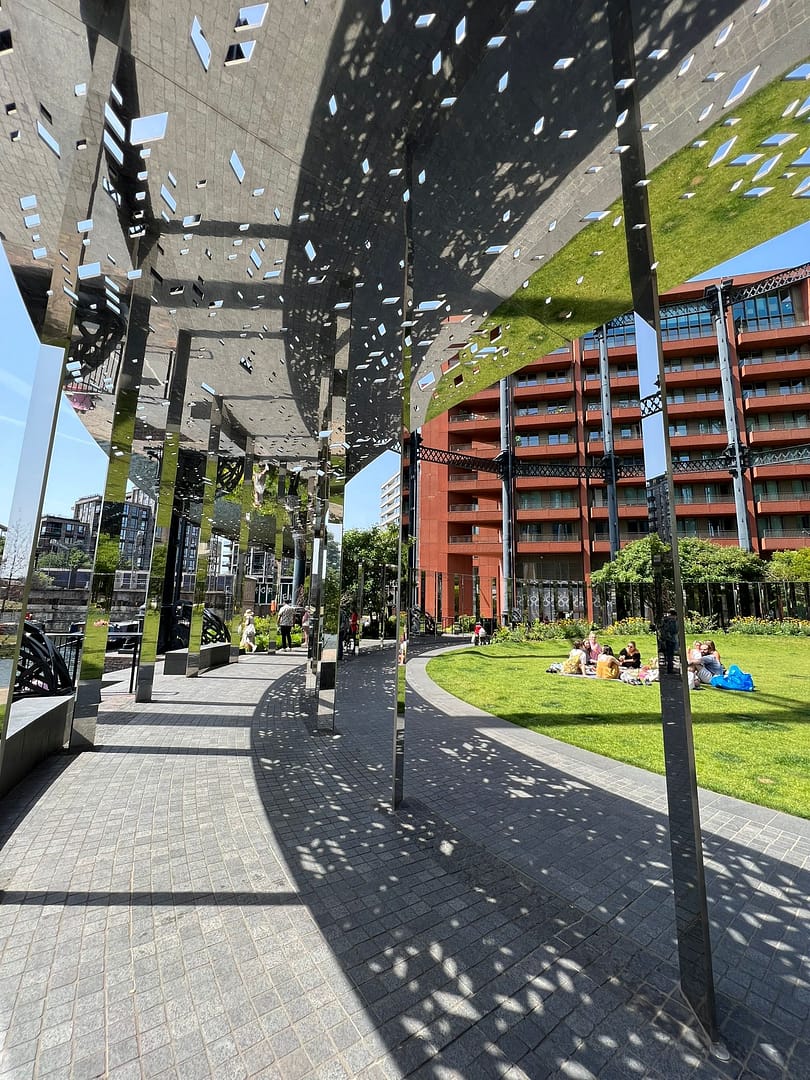What is Landscape Architecture
What is Landscape Architecture?
Landscape architecture, a profession involving the planning, design, and management of the natural environment. The occupation covers areas of construction, horticulture, design and environmental planning.
Landscape Architecture covers many sectors including public, private, health, commercial and educational to name a few. Work covers spaces like public realm, parks, gardens, countryside, housing developments and other green spaces.
A Brief History of Landscape Architecture
The history of landscape architecture can be traced back to ancient times. The first examples of planned green spaces were the gardens of Mesopotamia and Egypt. These gardens were designed for pleasure and relaxation and for practical purposes such as irrigation and food production.
In medieval Europe, religious orders such as monks and nuns began to create their own gardens. These were often very ornate and included features such as fountains, statues, and hedges.
During the Renaissance, landscape architecture became more formalized. The Italian architect Andrea Palladio was one of the first to create detailed garden plans. His work had a big influence on gardening in Europe and America.
In the 18th century, landscape architecture became more popular in Europe and America. This was partly due to the work of people such as Lancelot “Capability” Brown and Humphry Repton. They believed that gardens should be designed for beauty and relaxation.
The 19th century saw a decline in interest in formal gardens. This was because many people believed that gardens should be natural and unplanned. However, there was a revival of interest in landscape architecture in the 20th century. This was led by people such as Gertrude Jekyll and Frank Lloyd Wright.
Landscape architecture is now a popular profession all over the world. It is used to create public parks, private gardens, and urban green spaces.


Educational Routes Into The Profession
There are several ways to become a landscape architect. The most common route is to study for a degree in landscape architecture. This can be done at many universities around the world. Alternatively, students can undertake apprenticeships from level three to level seven. Apprenticeships are supported by the Landscape Institute and were approved in 2020.
After completing a degree, further training may be undertaken during employment. The pathway to chartership is an active learning process. A method of continual assessment over the course of several months to several years culminates in an oral examination. Upon completion and successful result, the landscape architect shall be qualified.


What The Job Involves – Responsibilities
The job of a landscape architect is varied and can involve many different tasks. These can include but are not limited to:
1. Conducting site visits and surveys
The job of a landscape architect often begins with a site visit. This is where the landscape architect will visit the project’s location and assess the land. They will also take notes, measurements and photographs as required.
After the site visit, the landscape architect will collate the data to inform the project team. Data will include information about the land, its history, and its current condition.
2. Meeting with clients and other professionals
The landscape architect will often meet with the client and project team and can be responsible for project management. Discussion may revolve around the project’s deliverables and the client’s vision. The landscape architect will also meet with other professionals, such as architects, engineers, ecologists and arboricultural consultants so as to develop a wholistic view of a project.
3. Researching local conditions and regulations
Before starting work on a project, the landscape architect will research the local conditions and regulations. This is to ensure the project complies with all the relevant laws. Consultants will research local policy frameworks and landscape character assessments from public authorities.
4. Preparing reports
After compiling the research, the landscape architect will set to work on preparing project work to fulfil the client’s brief. Reports for environmental planning projects may include:
- Landscape and visual appraisals
- Landscape and visual impact assessments
- Green infrastructure assessments
- Environmental Statements
Report will be used to present the findings to the client and inform potential development. It may also be used for parts of planning applications for approval from the relevant local authorities.
5. Designing landscapes
Depending on the project, elements of design may be required. Once the research and planning are complete, the landscape architect will review information informing design opportunities and constraints. The design process may be an iterative, starting from simple sketches and progressing into complex drawings and models.
Landscape architects may be involved in designing both hard and soft landscape elements.
The landscape architect may develop planting plans and drawing detailing hard materials that will be used in the project. They will also specify how these elements should be installed and may illustrate construction details.
6. Supervising construction projects
Once the design is complete, the landscape architect may supervise the project’s construction. This involves ensuring the work is carried out according to the plans. For this role the landscape architect may take on the responsibility of contract administrator. The role includes the monitoring of workmanship and ensuring the project is delivered in line with contract drawings.
The landscape architect may be responsible for maintaining a safe on-site working environment. It is up to everyone on a construction site to ensure site safety.

Big Projects That People May Have Heard Of In The U.K.
There are many landscape architecture projects in the United Kingdom. Some of the most famous ones include:
- Queen Elizabeth Olympic Park
- Thames Barrier Park
- Gravity Fields
- The Eden Project
These are just a few examples of the work that landscape architects do. As you can see, their work can have a big impact on the environment and on people’s lives.
Types Of Work Undertaken
The type of work that landscape architects do can vary considerably. Some projects are small, such as designing a garden for a private home. Others are much larger, such as redesigning a city park or a new green infrastructure network.
Public gardens, parks, and other public open spaces are important for a city or town. They provide a place for people to relax and enjoy nature. They also play an important role in developing masterplans for towns as a part of countryside planning.
Landscape architects play an important role in designing and creating these spaces. They work with clients and other professionals to develop a design that meets the clients and community’s needs. They also ensure that the space complies with all relevant legislation and regulations.
Finally, once the design is complete, landscape architects often oversee the project’s construction. Landscape Architects ensure works are carried out according to the plans and that it is safe for everyone using it.
Conclusion
As you can see, landscape architecture is a complex and important field. Landscape architects play a vital role in planning and designing our public and private spaces. They work with clients, other professionals, and the community to create safe, enjoyable, and sustainable spaces. We will explore in future articles about elements of landscape architecture and different aspects of the job.




